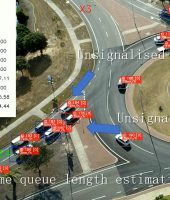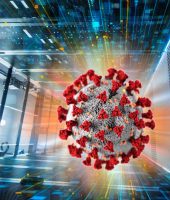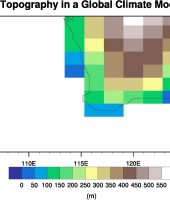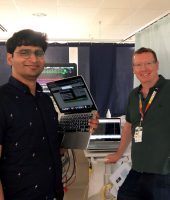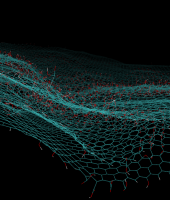Making Their Mach
Scramjets are air-breathing engines designed for hypersonic function (beyond five times the speed of sound), where, as Dr Wheatley explains, the internal conventional propulsion systems, such as those found on commercial airliners, would “melt in a matter of milliseconds” at such speeds.
The University of Queensland’s Dr Vincent Wheatley and his team are using Pawsey’s Magnus system to design a re-usable second-stage scramjet able to launch into space.
“In order to generate thrust at very high speeds within the atmosphere – by breathing the air, as opposed to a rocket, where you carry the oxidiser on board – you need to basically get rid of all the obstructions to the flow and just use fluid dynamics and chemistry to take care of all of the processes that the machinery does at low speeds,” Dr Wheatley explains.
“Research has been going on for over 50 years, and we’re only just now having our first successful flights of scramjets.”
The Challenge
Aerospace companies such as SpaceX and Blue Origin have successfully landed re-usable first stage (the part that provides initial thrust) rockets, but Dr Wheatley and his team are focused on developing re-usable second stage components.
“The second stage goes much faster, so it gives much greater thermal loads … so launching that second stage rocket and getting it back to base is going to be extremely difficult,” he says.
“We feel like right now is an amazing opportunity for high-speed air-breathing propulsion systems … we’ve got billionaires around the world who are looking at reusable access to space, and air-breathing technology is perfect for that, and would really be what makes that a reality.”
“It’s been extremely hard to make it work … you don’t have the machinery for controlling everything like you do at low speeds, and you have to rely on your knowledge of fluid dynamics and combustion to make it successful.”
The Solution
Dr Wheatley’s team has been using Pawsey’s Magnus system to run a series of sophisticated simulations, designed to maximise combustion efficiency in a Mach 12 scramjet, with the ultimate goal of designing a reusable scramjet stage for a vehicle capable of reaching space. He says such computational demands makes Magnus integral to his team’s work.
“The reason why, after all these decades of research, scramjet technology is really leaping ahead, is because we’ve now got the capability, thanks to resources such as Pawsey, to simulate these flows and look at all of the details of what’s going on inside [engines] and really diagnose where the losses are and what we can improve,” he says.
“[the simulations] to resolve what’s going on inside the engine, require over a terabyte (a thousand gigabytes) of RAM: most desktop computers have maybe, at most, 16 gigabytes.
“So just fitting the simulations in memory, never mind how long it takes to run them, requires a machine of the scale of Magnus.”
Outcome
THE CHALLENGE
OUTCOME
Dr Wheatley’s team was able to improve combustion in the Mach 12 engine by 20 per cent.
“The next challenge, once we’ve shown scramjets can work at the high end, is to design accelerating scramjets: a single engine that goes from maybe Mach 5 or Mach 6, all the way up to Mach 10 or Mach 12, depending on how successful we are,” he says.
“We’ve got plans on how we would do it, and other people have other ideas. Looking at ways of doing it is going to be the big new area of scramjet research.”
Dr Wheatley says Australia has historically been a world leader in hypersonics research – a tradition inspired by Ray Stalker’s work at the Australian National University in the 1960s.
“The reason hypersonics is going to be really beneficial going forward is that this is the time, in the next decade, when technology is going to get used for something really significant, which we hope is air-breathing access to space,” he says.
“For decades we’ve been one of the world leaders in this area: we now need to leverage that position and participate in the development of something which could completely transform access to space.”
Dr Wheatley sees continued hypersonics research such as his having profound social and economic benefits for Australia, and the world itself.
“One of the reasons Aerospace companies are so interested in this technology is that if you can bring down the cost of access to space, all of a sudden, the things you can utilise space for expand greatly,” he says.
“We want to stay at the forefront of hypersonics, and capitalise on our experience and position to be part of something amazing.”
Project Leader.

the mixing and combustion process in a planar scramjet. This visualizes the vortices in the engine, coloured by the mass fraction of hydroxyl, which shows where combustion is occurring. Credit Rolf Gehre
